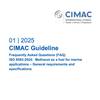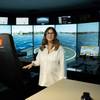VIKING's Helpline for New Coastal Safety Rules
With just a few months to go, VIKING has all hands on deck to ensure coastal vessel operators don’t risk their ability to sail under the US Coast Guard’s upgraded coastal vessel safety regulations.
Marine safety equipment manufacturer and servicing provider VIKING Life-Saving Equipment A/S says it’s worried that commercial vessels operating in North American coastal waters and waterways simply won’t be able to sail when new USCG safety regulations come into force on 26 February 2016.
The company has released evacuation equipment packages that ensure vessel operators can reliably comply with the new regulations and it has set up a dedicated toll free 1-855 helpline number to assist them, but VIKING’s VP Americas, Al Osle, says there are still operators who haven’t realized that the time to act is now.
“We’re worried about the ability of vessel operators to get their new equipment and training in place on time,” he says. “And we can see that many haven’t realized that it may be a little more complicated than simply buying some standard equipment and replacing what they’ve already got.”
Commercial vessels sailing in coastal waters typically carry life floats and rigid buoyant apparatus that can keep evacuees afloat, but which allow partial immersion in water. Such basic safety equipment doesn’t require periodic servicing or crew training.
From 26 February 2016, however, the USCG has stipulated that commercial vessels sailing in coastal waters must ensure dry-shod evacuation systems in the form of “…a survival craft that ensures that no part of an individual is immersed in water...". The change applies for vessels operating beyond 3 nautical miles of the baseline of the U.S. territorial sea or the coastline of the Great Lakes, and to everything from passenger ferries going between the mainland to islands, to boat cruises and commercial fishing boats. For these operators, the USCG’s new demands will require a re-think of a variety of safety aspects.
“Of course, we welcome the move as a step forward for ensuring the safety of passengers and crew,” says Al Osle, VIKING’s VP Americas. “But for now, we need to help vessel operators to navigate an unfamiliar world where compliance and cost-effectiveness aren’t just about specifying the right equipment. Importantly, they need to determine a servicing and maintenance plan that will ensure smooth sailing in the years that follow.”
The equipment he refers to include both inflatable buoyant apparatus (IBA) liferafts and VIKING’s commercial liferafts, all of which comply with the new USCG rules. VIKING’s IBA liferafts accommodate from 6 up to 150 people, and the company also provides a wide range of matching cradles, racks and ramps.
“Operators need to ensure that the equipment and servicing choices they make are right from the outset,” says Al Osle. “We can help them to make the right decisions, and we have attractive, cost-effective servicing and financing options. In fact, we’re already supporting many of our U.S. coastal customers with everything from practical advice to bundled product and servicing packages.”
Al Osle also encourages operators to act quickly to solve the new safety challenge: “With numerous operators making the transition right now, those who tackle the problem quickly are much more likely to be compliant on time.”
VIKING has set up toll-free 1-855-240-3473 for vessel operators to call.














